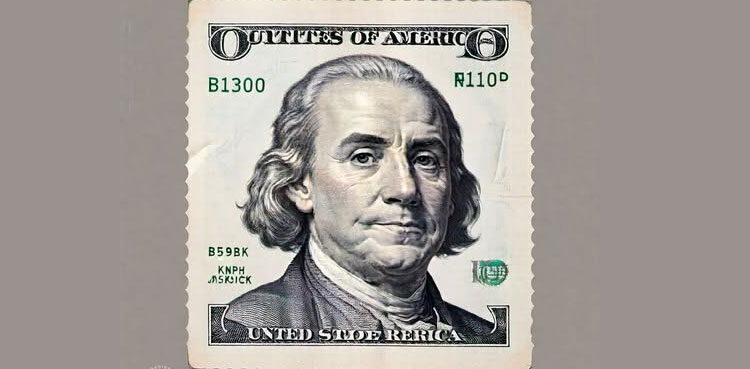NEW YORK: The US Dollar (USD) rallied against major currencies on a data-packed Wednesday after a report showed the world’s largest economy shrank in the first quarter, worse than market expectations, but better than the dire predictions touted by some of the biggest U.S. banks.
Gross domestic product (GDP) fell 0.3 per cent in the quarter, a Commerce Department report showed in its first estimate, undermined by a surge in imports trying to front-load purchases ahead of the Trump administration’s implementation of tariffs on most goods. Data showed that pre-tariff imports surged 41.3 per cent in the first three months of the year.
The consensus forecast was for a 0.3 per cent rise, according to economists polled by Reuters. Goldman Sachs, however, had forecasted a 0.8 per cent contraction, while J.P. Morgan predicted a 1.75 per cent fall.
The first-quarter GDP drop followed a 2.4 per cent rise in the fourth quarter.
Consumer spending, however, continued to grow, though at a moderate pace. Consumer spending on services – especially health care – grew 2.4 per cent in the first quarter as households remained resilient.
“It’s important to realize that a large chunk of the fall in GDP is due to the sharp increase in imports, which take away from GDP growth,” said Oliver Pursche, senior vice president, advisor, at Wealthspire Advisors in Westport, Connecticut.
“And that’s probably due to the expectation of tariffs. So, if you were to normalize that, you end up with positive GDP growth for the quarter, but it certainly doesn’t bode well for Q2.”
Following the data, the dollar climbed versus the yen to trade 0.4 per cent higher at 142.96 yen, while the euro slid 0.3 per cent to $1.1351.
The greenback was on pace for its biggest monthly decline against the yen since July 2024. Europe’s shared currency, on the other hand, was on track to post its largest monthly gain since November 2022.
Sterling fell 0.6 per cent to $1.3332. For the month of April, the British pound rose 3.8 per cent, its heftiest rise against the dollar in 2-1/2 years.
‘WELCOME NEWS’
A separate report showing a rise in U.S. consumer spending and income and slowdown in annual inflation also boosted the dollar. Data showed U.S. personal income increased 0.5 per cent in March and spending climbed 0.7 per cent, which were both above economists’ forecasts in a Reuters poll.
In the 12 months through March, the Personal Consumption Expenditures (PCE) Price Index, the Fed’s preferred inflation gauge, increased 2.3 per cent, down from 2.7 per cent in February. Annual core inflation also eased from the prior month, rising 2.6 per cent after advancing 3.0 per cent in February.
On a monthly level, both the headline and core PCE numbers were unchanged from the previous month.
“The almost unchanged level of core PCE prices in March is welcome news but, given the data precede the implementation of broad-based tariffs, core inflation will inevitably rebound sharply in the coming months,” said Harry Chambers, assistant economist at Capital Economics.
“Otherwise, the strong rise in real consumer spending last month should soothe fears that consumers are retrenching in the face of economic uncertainty.”
Following the PCE data, U.S. rate futures continued to point to a resumption of Federal Reserve interest rate cuts in June, with a total of 100 basis points in cuts, or four quarter-percentage-point reductions likely, bringing the U.S. central bank’s policy rate to the 3.25 per cent-3.50 per cent range by the end of this year.
In other reports, the National Association of Realtors’ (NAR) Pending Home Sales Index, based on signed contracts, jumped 6.1 per cent to 76.5 last month. The increase was the largest since December 2023.
Earlier in the session, the ADP National Employment Report showed that U.S. private payrolls growth slowed more than expected in April. Private payrolls increased by only 62,000 jobs this month after a downwardly revised 147,000 gain in March. Economists polled by Reuters had forecast private employment would advance by 115,000 following a previously reported gain of 155,000 in March.
The dollar pared gains versus the yen after the ADP data.


Leave a Comment